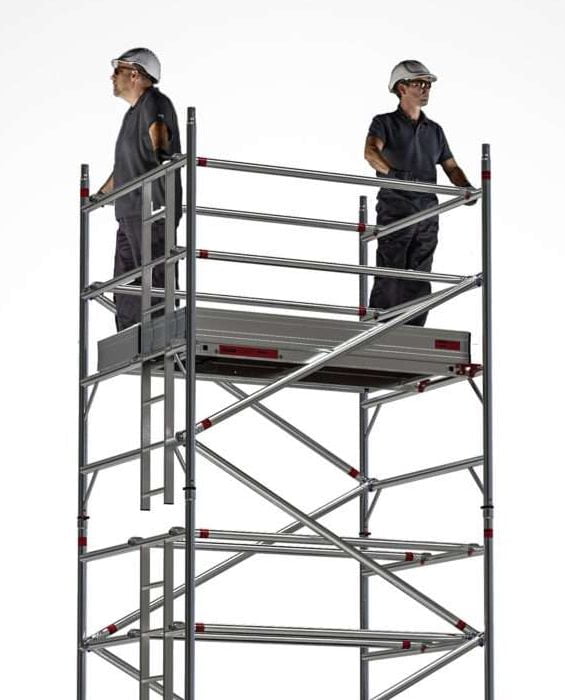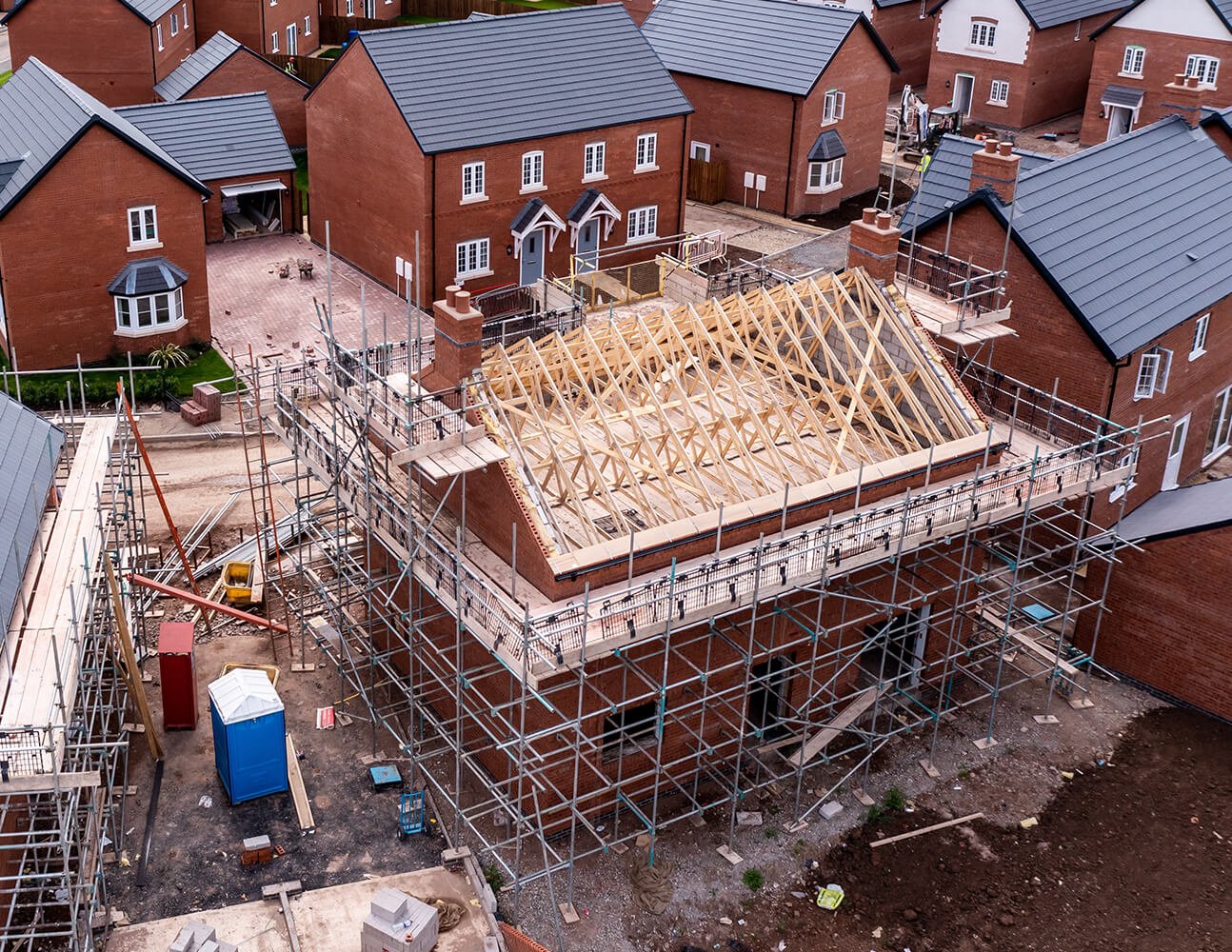A Comprehensive Guide to the Essential Attributes of Scaffolding in Modern Building And Construction
The landscape of modern-day construction progressively depends on efficient scaffolding systems that focus on performance, development, and security. As tasks grow in intricacy, comprehending the important attributes of scaffolding ends up being critical for making certain worker security and optimizing job timelines. This guide discovers different kinds of scaffolding, highlights crucial safety features, and checks out product improvements that add to efficiency and sustainability. The effects of these components extend much beyond plain building and construction methods, motivating a closer look at how they influence general job success and employee health.
Kinds of Scaffolding
Although scaffolding systems can differ widely in style and application, they usually fall under several unique classifications that satisfy various building and construction requirements - Scaffolding. The most common kinds consist of sustained scaffolding, suspended scaffolding, and rolling scaffolding
Supported scaffolding includes systems supported by a framework of poles, which provide a elevated and secure working surface area. This kind is generally used for tasks that call for significant elevation, such as bricklaying or outside painting.
Suspended scaffolding, conversely, is made use of for jobs requiring access to high altitudes, such as cleaning or repairing structure facades. This system hangs from a roof or an additional framework, enabling employees to lower or raise the system as needed.
Moving scaffolding features wheels that permit simple wheelchair throughout a work site. It is particularly beneficial for tasks that need regular moving, such as indoor job in large spaces.
Each kind of scaffolding is made with specific applications in mind, guaranteeing that building tasks can be executed efficiently and efficiently. Comprehending these groups is crucial for choosing the ideal scaffolding system to fulfill both job needs and website conditions.
Key Safety Functions
Safety and security is paramount in scaffolding systems, as the possible dangers linked with working at heights can lead to severe crashes if not correctly managed. Trick safety features are vital to make sure the health of workers and the stability of the building and construction site.
Firstly, guardrails are critical. These obstacles give a physical safeguard versus drops, dramatically decreasing the risk of serious injuries. Additionally, toe boards are often used to avoid devices and products from dropping off the scaffold, securing employees below.
One more important component is using non-slip surface areas on platforms. This attribute boosts hold, particularly in negative weather conditions, thereby decreasing the probability of slips and drops. Additionally, gain access to ladders must be securely placed to help with secure entry and departure from the scaffold.
Routine inspections and upkeep of scaffolding systems are also essential. These evaluations make certain that all components remain in excellent condition and working appropriately, dealing with any type of wear or damages promptly.
Finally, correct training for all employees involved in scaffolding procedures is necessary to guarantee that they recognize safety and security protocols and can determine prospective threats. Scaffolding. Collectively, these features produce a much safer working setting and significantly reduce threats related to scaffolding
Product Developments
Advancements in material science have actually dramatically affected the scaffolding market, improving scaffolding technique both safety and efficiency in modern construction. The intro of high-strength steel and light weight aluminum alloys has transformed traditional scaffolding systems.
In addition, cutting-edge composite products, such as fiberglass-reinforced plastics, have become feasible options. These materials are immune to rust and environmental destruction, therefore extending the life-span of scaffolding systems, especially in extreme weather. Using such materials contributes to decrease maintenance costs and makes certain constant performance over time.


Layout Factors To Consider
Thinking about the intricacies of modern-day building projects, effective scaffolding layout is extremely important to making sure both performance and safety and security. Design factors to consider need to encompass numerous aspects, including lots capability, elevation, and the certain requirements of the construction website. Each project provides unique obstacles, requiring an adaptable technique to scaffolding systems that can adapt to varying problems.
Structural honesty is vital; therefore, designers must determine the loads that the scaffolding will certainly sustain, consisting of employees, materials, and equipment. The option of materials plays an essential duty in making sure the scaffolding can endure these loads while staying durable and light-weight. Additionally, the style has to enable very easy access and egress, promoting the smooth motion of personnel and materials.
Safety and security functions, such as guardrails and non-slip surface areas, ought to be included to minimize risks of mishaps. In addition, the design must think about the surrounding environment, consisting of nearby structures and possible hazards. By addressing these design considerations, construction firms can enhance the efficiency of scaffolding systems and promote a safer working environment, ultimately contributing to the overall success of the project.
Upkeep and Inspections
The performance of scaffolding systems extends past initial design and execution; recurring upkeep and regular assessments are essential to guaranteeing their continued performance and security throughout the duration of a job. Routine examinations should be conducted by qualified workers to recognize any kind of indications of wear, damages, or instability that can compromise the integrity of the scaffolding.
Upkeep methods need to consist of routine checks of structural components, such as planks, installations, and frameworks, making check my blog certain that all aspects remain secure web link and free from rust or other wear and tear. In addition, the performance of safety attributes, such as guardrails and toe boards, need to be evaluated to make sure compliance with safety guidelines.
Paperwork of all inspections and upkeep tasks is critical for accountability and governing conformity. A systematic technique to record-keeping not just help in tracking the condition of the scaffolding but additionally supplies essential evidence in case of an incident.
Inevitably, developing an extensive upkeep and inspection routine will significantly decrease the danger of crashes and enhance the general security of the construction site. By prioritizing these techniques, construction managers can secure employees and copyright the project's stability.

Verdict
Finally, the necessary functions of scaffolding in contemporary building encompass a range of critical components, consisting of diverse types, essential safety devices, product technologies, and thoughtful style considerations. Highlighting safety through guardrails and non-slip surface areas, together with developments in products like high-strength steel, improves both performance and sustainability. Routine maintenance and evaluations are important for ensuring architectural stability and safety on construction websites, inevitably assisting in efficient job implementation and advertising the well-being of employees.
The landscape of modern building and construction progressively relies on effective scaffolding systems that prioritize safety, effectiveness, and advancement.Advancements in material science have dramatically affected the scaffolding industry, enhancing both safety and effectiveness in contemporary building and construction. Overall, these material developments not just boost the efficiency and safety and security of scaffolding systems yet also align with the industry's push towards sustainability, as lots of modern materials are developed to be much more ecologically friendly.
Thinking about the intricacies of contemporary building projects, effective scaffolding design is critical to guaranteeing both functionality and safety.In conclusion, the important attributes of scaffolding in contemporary building include a variety of important components, consisting of varied kinds, crucial security mechanisms, material innovations, and thoughtful design considerations.
Comments on “Affordable Domestic Scaffolding for Every Home Renovation Project”